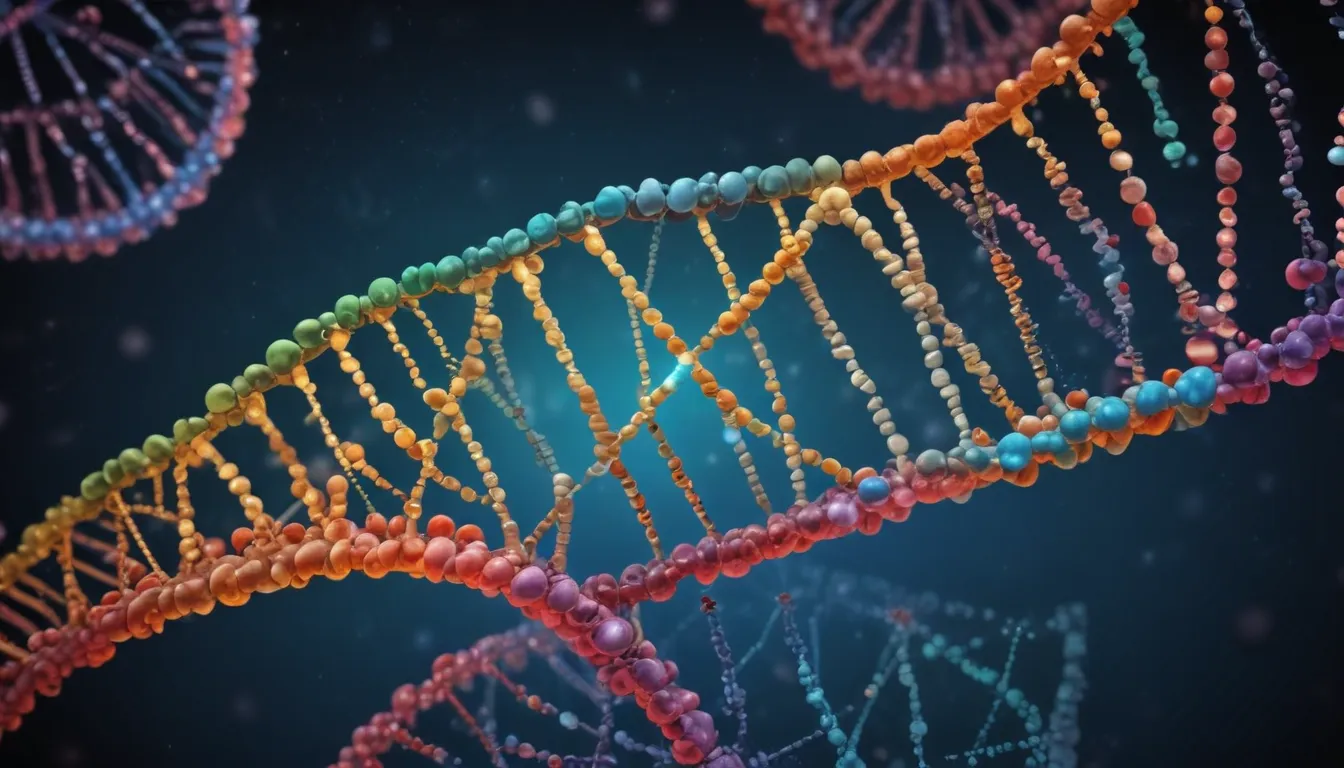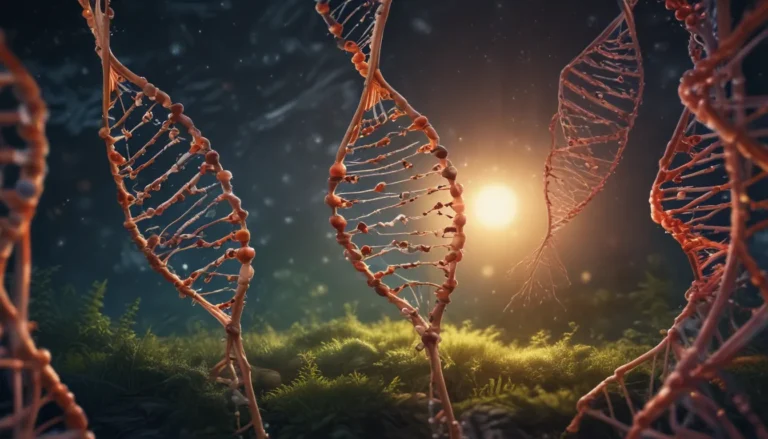A Note About Images: The images used in our articles are for illustration purposes only and may not exactly match the content. They are meant to engage readers, but the text should be relied upon for accurate information.
Are you ready to embark on a fascinating journey into the world of DNA microarrays? These powerful tools have revolutionized genetic research, allowing scientists to delve into the complexities of gene expression with unprecedented insight. Join us as we uncover 16 astonishing facts about DNA microarrays that will deepen your understanding of their significance and impact on various fields of science. From their humble beginnings to their cutting-edge applications and future potentials, DNA microarrays continue to push the boundaries of genetic exploration. So buckle up and get ready to explore the extraordinary world of DNA microarray technology!
DNA Microarrays: A Game-Changer in Genetic Research
Shaping the Landscape of Genetic Exploration
DNA microarrays, also known as DNA chips or DNA arrays, have transformed the landscape of genetic research by enabling scientists to analyze the expression of thousands of genes simultaneously. This high-throughput approach has revolutionized the way we study genetics, paving the way for groundbreaking discoveries in genomics, personalized medicine, and beyond.
The Founding Fathers of DNA Microarray Technology
In the late 1990s, two visionary research groups, led by Patrick O. Brown and Michael Schena, pioneered the development of DNA microarray technology. Their innovative work laid the foundation for a new era of genetic exploration, fueling advancements in understanding gene expression patterns and their implications for human health and disease.
Unleashing the Power of DNA Microarrays
Accelerating Genetic Research Through High Throughput Analysis
One of the key advantages of DNA microarrays is their ability to analyze large volumes of genetic information in a fraction of the time required by traditional methods. This accelerated pace of analysis has significantly enhanced our understanding of diseases, biological processes, and the intricate interplay of genes within the human genome.
Illuminating Comparative Genomics with DNA Microarrays
By comparing the gene expression profiles of healthy and diseased tissues, DNA microarrays provide invaluable insights into the underlying molecular mechanisms of various conditions. This comparative approach has revolutionized personalized medicine, offering tailored treatment strategies based on each individual’s unique genetic makeup.
Guiding Disease Diagnosis and Prognosis
Through the detection of specific gene expression patterns, DNA microarrays play a crucial role in diagnosing diseases and predicting their progression. This diagnostic capability allows healthcare providers to develop personalized treatment plans that are tailored to each patient’s genetic profile, optimizing outcomes and improving quality of care.
DNA Microarrays: Transforming Research Across Multiple Frontiers
Unleashing the Potential of Pharmacogenomics
Pharmacogenomics, the study of how genetic variations influence drug responses, relies heavily on DNA microarrays to identify key genetic markers. By pinpointing variations that impact drug efficacy and toxicity, these technologies pave the way for precision medicine, where treatments are tailored to each patient’s genetic predispositions.
Decoding the Mysteries of Cancer Through DNA Microarrays
In the realm of cancer research, DNA microarrays have proven to be invaluable tools for identifying gene expression patterns associated with different types of cancer. This nuanced understanding of cancer biology informs targeted treatment approaches, leading to improved patient outcomes and personalized therapeutic strategies.
Shedding Light on Developmental Biology with DNA Microarrays
Understanding gene expression patterns during development is essential for unveiling the intricate processes that shape living organisms. DNA microarrays have provided researchers with a window into developmental biology, illuminating the mechanisms of tissue differentiation, organ formation, and the dynamic nature of life itself.
Exploring the Boundless Horizons of DNA Microarray Technology
Fueling Evolutionary Studies Through Comparative Genomics
DNA microarrays have revolutionized comparative genomics and evolutionary studies by enabling researchers to compare gene expression profiles across different species. This comparative analysis offers insights into the genetic basis of evolutionary processes, shedding light on the intricate tapestry of life on Earth.
Empowering Forensic Genetics with DNA Microarrays
In the realm of forensic genetics, DNA microarrays have emerged as powerful tools for analyzing DNA samples and identifying individuals with unprecedented accuracy. These technologies play a pivotal role in criminal investigations, paternity testing, and other applications requiring high-resolution genetic information.
Championing Environmental Monitoring Through Gene Expression Analysis
Environmental monitoring involves studying the impact of pollutants and toxins on biological systems. DNA microarrays provide researchers with a powerful tool for monitoring gene expression changes in response to environmental stressors, offering valuable insights into the environmental impact on living organisms.
Spearheading Agricultural Research through Gene Expression Profiling
Agricultural researchers leverage DNA microarrays to study gene expression patterns in crops and livestock, advancing breeding strategies and enhancing agricultural productivity. By deciphering the genetic underpinnings of agricultural traits, DNA microarrays contribute to sustainable agriculture and food security.
Embracing the Future of DNA Microarray Technology
Leveraging the Advantages of DNA Microarrays
DNA microarrays offer a myriad of advantages, including the ability to analyze thousands of genes simultaneously, generate high-throughput data, and discover novel genetic markers and therapeutic targets. These technologies continue to push the boundaries of genetic research, shaping the future of personalized medicine and precision healthcare.
Navigating Ethical Considerations in DNA Microarray Research
As the field of DNA microarray research advances, ethical considerations surrounding privacy, data sharing, and informed consent come to the forefront. Researchers and policymakers must address these ethical challenges to ensure the responsible and transparent use of genetic information in research and clinical practice.
Conclusion: Unraveling the Mysteries of the Genetic Code
DNA microarray technology represents a paradigm shift in genetic research, offering unprecedented insights into the complexities of the genetic code. From unraveling gene mutations to predicting drug responses, DNA microarrays have opened new frontiers in research, with the potential to transform healthcare and advance our understanding of life itself. As these technologies evolve and improve, they hold the promise of revolutionizing diagnostics, treatment strategies, and our comprehension of the intricate mechanisms that govern our genetic makeup.
FAQs: Delving Deeper Into DNA Microarray Technology
-
What is a DNA microarray?
A DNA microarray is a powerful laboratory tool used to measure gene expression levels on a large scale. It consists of a solid support with thousands of unique DNA sequences representing genes of interest. -
How does a DNA microarray work?
DNA microarrays function by allowing cDNA molecules in a sample to bind to their corresponding DNA sequences on the array. This binding is detected using fluorescent probes, which reveal the genes expressed and their levels in the sample. -
What can DNA microarrays be used for?
DNA microarrays have a wide range of applications, including gene expression profiling, identifying genetic variations, studying disease mechanisms, predicting drug responses, and guiding personalized medicine approaches. -
What are the advantages of using DNA microarrays?
DNA microarrays enable high-throughput analysis, simultaneous measurement of thousands of genes, identification of biomarkers, and discovery of new therapeutic targets, advancing genetic research and personalized medicine. -
Are there limitations to using DNA microarrays?
While DNA microarrays are powerful tools, they have limitations such as the need for prior gene knowledge, potential background noise, cross-hybridization, and incomplete representation of an organism’s transcriptome.
Join us in exploring the captivating world of DNA microarray technology, where each discovery paves the way for new insights, innovations, and transformative breakthroughs in the ever-evolving field of genetics. Trust in our dedication to delivering engaging and reliable content as we journey together through the vast expanse of scientific discovery and exploration.






